KHẢO SÁT ĐẶC ĐIỂM LÂM SÀNG VÀ KẾT QUẢ ĐIỀU TRỊ SỚM ĐỤC THỦY TINH THỂ BẨM SINH Ở TRẺ DƯỚI 7 TUỔI TẠI BỆNH VIỆN MẮT THÀNH PHỐ HỒ CHÍ MINH
Nội dung chính của bài viết
Tóm tắt
Đặt vấn đề: Đục thủy tinh thể bẩm sinh không phát hiện và can thiệp phẫu thuật kịp thời trong giai đoạn trước 7 tuổi, có thể dẫn đến nhược thị, làm giảm hiệu quả điều trị. Mục tiêu: Mô tả đặc điểm lâm sàng và phân tích kết quả điều trị phẫu thuật sớm sau 3 tháng theo dõi ở trẻ dưới 7 tuổi bị đục thủy tinh thể bẩm sinh phẫu thuật tại khoa Mắt Nhi – BV Mắt TPHCM. Phương pháp nghiên cứu: mô tả, có can thiệp, tiến cứu, cắt dọc. 40 BN từ 1 tháng tuổi đến dưới 7 tuổi, 66 mắt. Kết quả: 22 nữ, 18 nam. 20% có bệnh toàn thân ngoài mắt. 4/8 bất thường tim bẩm sinh. 30,3% đục thủy tinh thể gia đình. 67,5% đồng tử trắng. 70% đục hai mắt, 30% đục môt mắt. Đục toàn bộ chiếm tỉ lệ cao nhất (33,3%). 33 mắt IOL và 33 mắt aphakic. Thị lực trẻ aphakic từ ĐNT 0,2m đến 2/10; có đặt IOL: từ ĐNT 1m đến 7/10. 72,7% khúc xạ tồn dư thặng chỉnh. 9,01% có biến chứng hậu phẫu; 6,06% đục trục thị giác. Kết luận: 50% mẹ có thai kỳ nguy cơ; 20% có bệnh toàn thân, 10% tim bẩm sinh; 25% tiền căn gia đình có đục thủy tinh thể bẩm sinh; 22,7% có bất thường cấu trúc. 66,7% cải thiện phân độ thị lực; Khúc xạ tồn dư thặng chỉnh 72,7%; 77% trẻ phẫu thuật 1 mắt có nguy cơ nhược thị. Biến chứng đục lại trục thị giác 6,06%.
Chi tiết bài viết
Từ khóa
Đục thủy tinh thể bẩm sinh, mắt nhi, Phaco A
Tài liệu tham khảo
2. Behzad Mansouri, Rebecca C. Stacy, Joshua Kruger, Dean M. Cestari. Deprivation Amblyopia and Congenital Hereditary Cataract. Seminars in Ophthalmology. 2013/09/01 2013;28(5-6): 321-326. doi:10.3109/ 08820538. 2013.825289
3. A. Yeritsyan, A. V. Surve, B. Ayinde, et al. Efficacy of Amblyopia Treatments in Children Up to Seven Years Old: A Systematic Review. Cureus. Mar 2024;16(3): e56705. doi:10.7759/cureus. 56705
4. P. D. Lenhart, S. R. Lambert. Current management of infantile cataracts. Surv Ophthalmol. Sep-Oct 2022;67(5):1476-1505. doi:10.1016/j.survophthal.2022.03.005
5. D. Yorston. The global initiative vison 2020: the right to sight childhood blindness. Community Eye Health. 1999;12(31):44-5.
6. S. G. Prakalapakorn, S. A. Rasmussen, S. R. Lambert, M. A. Honein. Assessment of risk factors for infantile cataracts using a case-control study: National Birth Defects Prevention Study, 2000-2004. Ophthalmology. Aug 2010;117(8): 1500-5. doi:10.1016/j.ophtha.2009.12.026
7. Zuhui Zhang, Yana Fu, Jiajun Wang, et al. Glaucoma and risk factors three years after congenital cataract surgery. BMC Ophthalmology. 2022/03/12 2022;22(1):118. BMC Ophthalmology. doi:10.1186/s12886-022-02343-9
8. A.M. C. Costa, N. Calixto, E.G. Milhomens, S. Cronemberger. Axial Length, Anterior Chamber Depth, Lens Thickness and Horizontal Corneal Diameter in Normal Children. Investigative Ophthalmology &Visual Science.2005;46(13): 671-671.
9. Võ Thị Chinh Nga, Phan Thị Anh Thư, Trần Thị Kim Loan. Đánh giá kết quả khúc xạ ban đầu đặt kính nội nhãn nguyên phát ở trẻ em. 2012;16(1):80-84.


